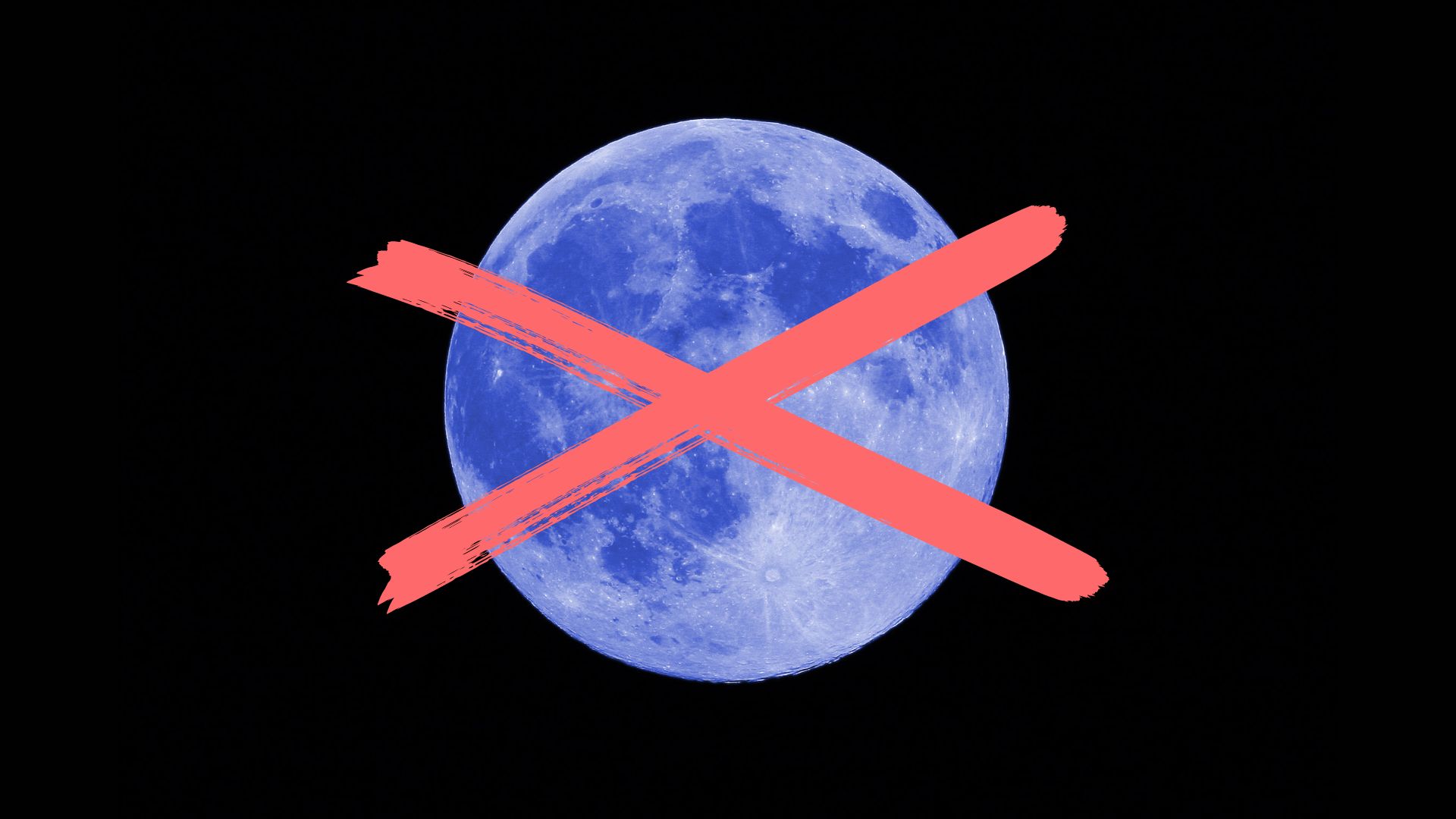A “super blue moon” is said to be about to occur on August 31, 2023. Scientifically, the expression is wrong: the Moon will not be bluer or more super than usual.
” Brighter than a full moon », « A festive and rare event », « The breathtaking blue supermoon returns in August »: beware of these misleading titles, which announce a bigger than usual and even bluish Moon in the sky on the night of Wednesday August 30 to Thursday August 31, 2023. There is nothing special to see on that day : the Moon is as usual — which is, of course, pleasant to admire.
The misunderstanding is easily understood: even NASA speaks of “super Moon” and “Blue Moon” in a publication of August 24th. However, these expressions are without scientific basis and maintain confusion about what will really “happen” (ie: we will not see anything more than usual).
No, the moon does not turn blue
Don’t expect to see a bluish moon in the sky on August 31st. We will simply see a full Moon, exactly the same hue as usual.
So why talk about “Blue Moon”? The expression is used here to describe the fact that the full moon occurs twice in the same calendar month. There is no denying that this is the case in August 2023: the Full Moon occurred on Tuesday August 1st and will return on Thursday August 31st. But the expression has nothing astronomical or scientific about it. Its popularity is linked to an error published in March 1946 in the pages of the Sky & Telescope media. The expression, then widely taken up by other media, went viral.
Going back further in the past, the “Blue Moon” has a cultural origin, as is often the case with Moon nicknames (Pink Moon, Flower Moon, etc.). In the past, the “Blue Moon” was a nickname given to the third out of four full moons observed during the same season, according to The Farmers’ Almanac (an American periodical published since 1818).
This initial expression, which had a cultural and traditional meaning, was erased in favor of a (bad) meaning, itself born of the error published by Sky & Telescope. This is how we now hear of “blue moon” as the second full moon of the same month, while the term is not scientific.
No, the moon is not super
The Moon is no more super than it is blue. Again, the term “supermoon” is devoid of astronomical value. Even if NASA uses it frequently and thus contributes to maintain the confusion around this expression, the space agency itself recognizes that it is not scientific: ” The term ‘super moon’ was coined in 1979 [ndlr : par l’astrologue Richard Nolle] and is often used to describe what astronomers call a full Moon at perigee. »
The Earth-Moon distance varies slightly over an orbit.
At perigee, the Moon is about 363,300 km of the earth ; at the apogee, this distance is 405,500 km.
It simply means that the full Moon occurs almost when the Moon is at the closest point of its orbit around the Earth. The scientific term est the perigee-syzygy : perigee being the moment when the Moon is at its minimum distance from the Earth; syzygy designating the moment of the full moon.
But, despite this particular situation, our eye does not distinguish any change: the full Moon may be slightly closer to us at perigee, the variations in its apparent diameter are imperceptible.
The Moon is at perigee on Wednesday, August 30, 2023, at 5:54 p.m. (at a distance of 357,180 km from Earth). The full moon occurring on Thursday, August 31 at 3:35 a.m., we can indeed speak of syzygy perigee. But, no “super moon” or “blue moon”.
If you liked this article, you will like the following ones: do not miss them by subscribing to Numerama on Google News.
